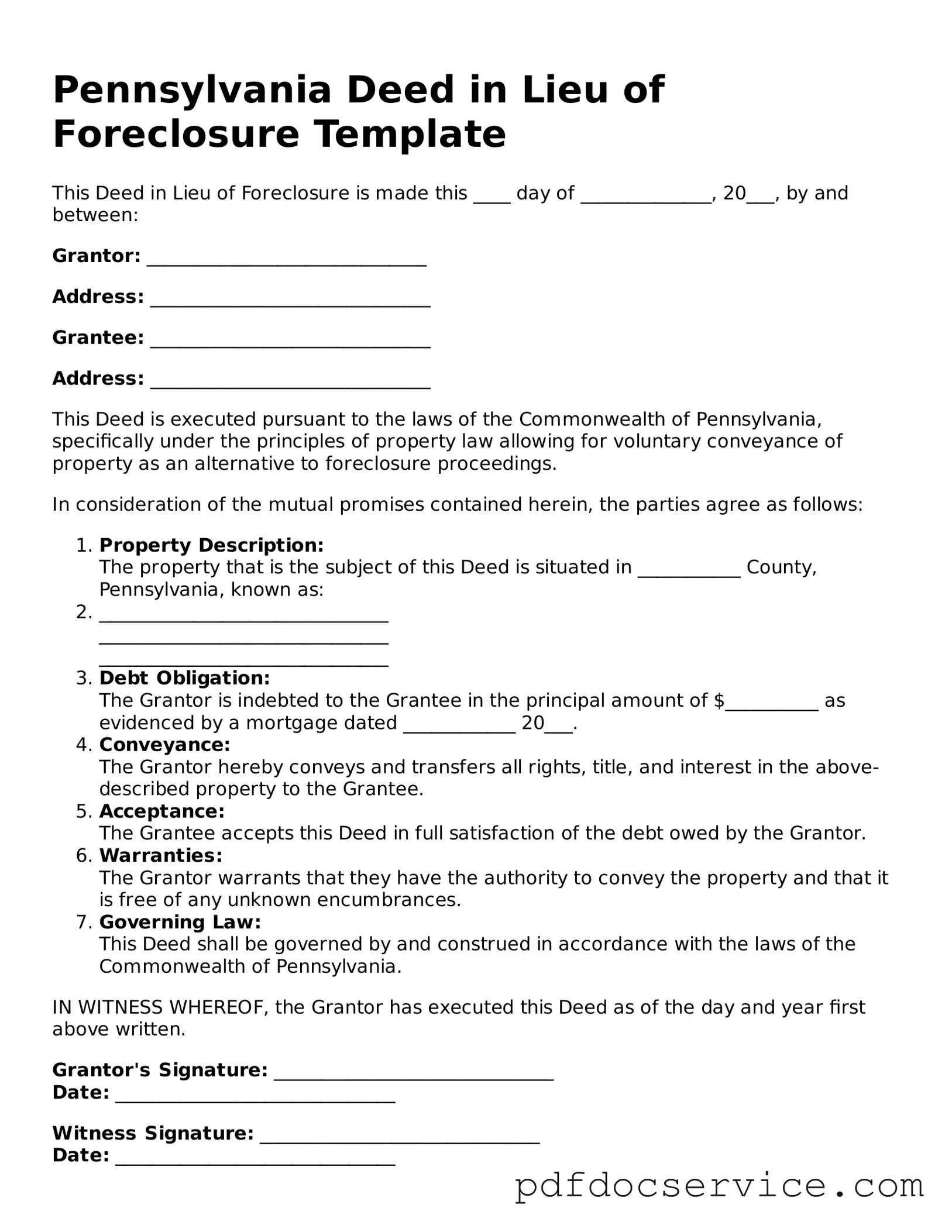Printable Deed in Lieu of Foreclosure Template for Pennsylvania
A Deed in Lieu of Foreclosure is a legal document that allows a homeowner to transfer ownership of their property back to the lender, thereby avoiding the lengthy foreclosure process. This arrangement can provide a more straightforward solution for both parties involved, often helping homeowners escape the financial burden of an impending foreclosure. Understanding the nuances of this form is crucial for anyone navigating the complexities of property ownership and mortgage obligations in Pennsylvania.
Open Deed in Lieu of Foreclosure Editor
